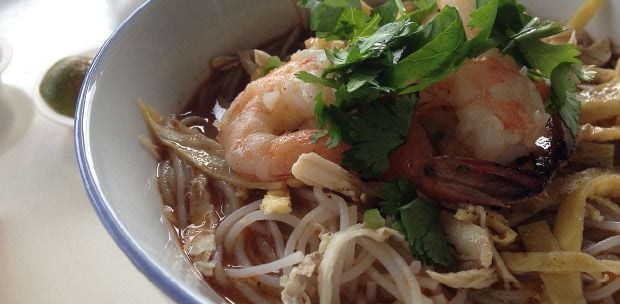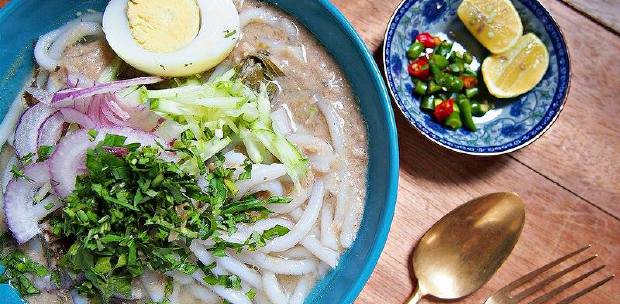Although no food connoisseur, I feel the urge to at least attempt a culinary paean to my favourite dish: Sarawak laksa, that wickedly rich, subtly flavourful dish that the late Anthony Bourdain rightly pronounced as "the breakfast of the gods".
Just over a month ago, what Sarawakians had known for the longest time — that absolutely nothing beats their laksa — was confirmed when the international gastronomy website, TasteAtlas.com, ranked the Sarawak dish tops in Asia, giving it 4.8 out of 5 stars in a vote by the website's members.
In doing so, TasteAtlas placed Sarawak laksa in its "Best" category, outranking Iran's tahchin (4.7 stars) and Japan's nabemono (4.6 stars).
China's jiaozi (dumplings) and Japan's sushi only made it to the "Great" category with 4.4 stars and 4.3 stars respectively, in case readers think this is a ranking of only more exotic Asian dishes.
Besides, no other Southeast Asian dish made the cut into such rarefied heights!
Bourdain did much to help popularise Sarawak laksa, visiting Kuching not just once but twice (the second time, I think, because he had found the local laksa simply irresistible).
In his latest compilation of treats from around the world, World Travel, he devoted an entire page to the dish, adding yet another superlative: "the weapons-grade plutonium of breakfasts".
What is it with Sarawak laksa that locals, and increasingly non-Sarawakians, are raving about? Again, Bourdain, with more than a touch of hyperbole, probably sums it up best.
"It starts off benignly enough, with a generous serving of bee hoon noodle, fried egg, shrimp – but what comes next takes this dish to a whole new level: a spicy, fabulous, hearty hellbroth of coconut milk, curry, Sarawak hot chili peppers — together it's a liquid whose flavours combine to create a scorchingly hot, yet delicious, assault on the senses. It's a masterpiece of pain and pleasure."
Perhaps Bourdain was overdramatising it to tempt the bland Western palate. A local friend took some exception to adding "curry" to the description of Sarawak laksa.
There is, of course, curry laksa in other parts of the country and Singapore, and asam laksa over in Penang. There is coconut milk in Sarawak laksa, for sure, but curry it certainly is not.
I had to do a bit of research to try to uncover what exactly gives Sarawak laksa its distinctive taste. It is a combination of two key ingredients, coconut milk and tamarind paste, and a whole lot of others besides.
There are also shallots, fresh chillies and lemongrass, ginger, galangal, garlic, candlenuts, coriander, sugar, salt and yes, a dash of curry powder. Some add sambal belacan and a pinch of cumin.
All these are blended and simmered with some oil for half an hour or so, such that the resulting paste comes through with all its myriad flavours.
The paste then goes with the coconut milk and chicken and shrimp stock to produce the savoury broth.
That is a pretty heady brew, but combined with blanched bee hoon, bean sprouts and fresh shrimp, the entire concoction titillates the tastebuds with the ultimate comfort food.
A squeeze of calamansi juice and sambal on the side can even make one sweat!
As Sarawak, like the rest of the country, gets ready to welcome back tourists, I can think of no better way to draw in the travelling horde than through the stomach. Sabah's allure may be its diving spots and Gunung Kinabalu.
Sarawak fancies itself as a nature paradise but, let's face it, depending on the state's natural assets may be a hard-sell as long-haul tourists, particularly from the West, may no longer be venturing too far afield for a while.
Sarawak's rich culinary traditions, borne out of its multicultural roots, and offering tasty, tempting and distinctive treats, will surely be a bestseller if properly promoted to keep visitors beating a path to its door again and again.
The writer views developments in the nation, region and wider world from his vantage point in Kuching, Sarawak
The views expressed in this article are the author's own and do not necessarily reflect those of the New Straits Times






